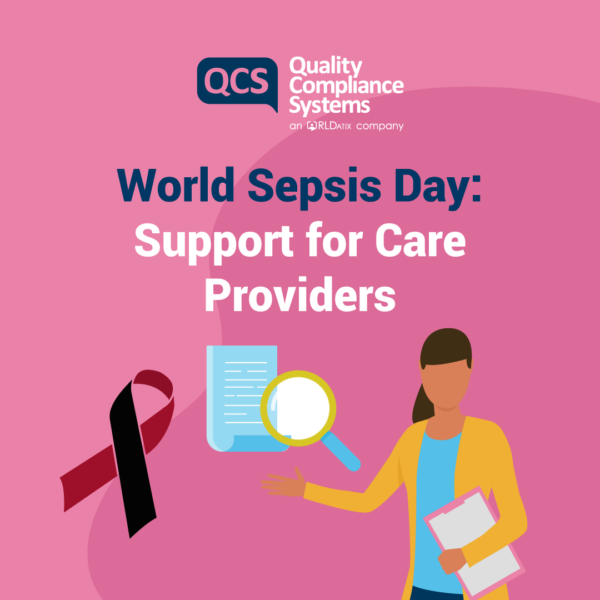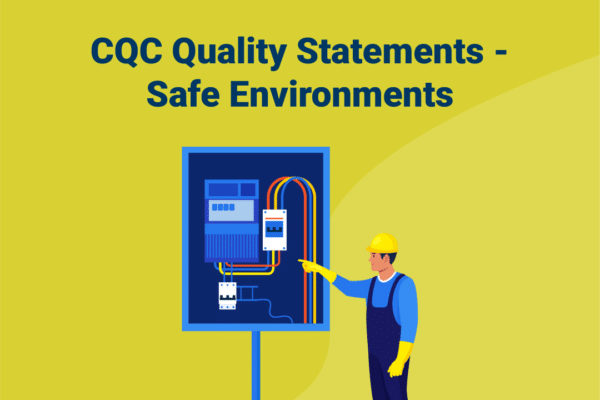Download our factsheet on ‘World Sepsis Day: Support for Care Providers’ here
DOWNLOAD NOW
Alternatively, read it here:
Today is World Sepsis Day. Lisa Barnes-Metcalf, explains what sepsis is, and how care providers can spot the signs of sepsis in the people they support, to prevent deaths from this condition.
What is Sepsis?
Sepsis is a life threatening condition that occurs when the body’s response to an infection injures its own tissues and organs.
If not recognised early and treated promptly, it can lead to multiple organ failure and death.
According to the Sepsis Trust, five people die with sepsis every hour in the UK. 40% of those who develop sepsis suffer long term physical, cognitive and/or psychological effects.
Symptoms
The life-threatening condition can initially look like flu or a chest infection. There is no single sign of sepsis, and symptoms are different for adults and children, according to the Sepsis Trust.
Sepsis can be hard to spot particularly in:
- People with dementia
- People with a learning disability
- People who have difficulty communicating
Symptoms in Adults
- Slurred speech or confusion
- Extreme shivering or muscle pain
- Passing no urine in a day
- Severe breathlessness
- It feels like you are going to die
- Skin pale or mottled
If you detect any of these symptoms, seek medical help immediately and ask, “could it be sepsis?”
Track and trigger warning scores such as NEWS2 and RESTORE2, help staff identify those people who may be deteriorating, including from infections, and can trigger staff to think sepsis.
What causes sepsis?
Sepsis results from any kind of infection, most commonly from bacterial infections.
The most common causes are:
- Pneumonia 50%
- Urinary tract 20%
- Abdomen infections (appendicitis, gall bladder infections) 15%
- Skin and soft tissue (cellulitis, wound infections) 10%
Risk factors
The greatest risk factor is infection. Sepsis can impact anyone, young or old, sick or healthy. Those with increased risk of infection include adults over 75 and/or those who are very frail.
Those with impaired immune systems due to illness or drugs, such as:
- Diabetes
- Long term steroids
- Chemotherapy
- Immunosuppressant drugs
- People that have had surgery in the last 6 weeks
- Those with cuts, burns, wounds or blisters
- Those with indwelling lines or catheters
- Pregnant women
- Babies (under 1 year old)
How is Sepsis diagnosed?
There is no single test to diagnose sepsis. It requires a full medical assessment to make a diagnosis, which includes monitoring of vital signs and blood tests.
What is the treatment for Sepsis?
Sepsis is a medical emergency. It can get worse really quickly.
Early diagnosis and treatment of sepsis significantly increases an individual’s chances of survival.
Treatment may include oxygen, taking blood, giving IV antibiotics, IV Fluids and monitoring of vital signs and urine output.
The person may need to be admitted to a hospital’s Critical Care Unit for more support with breathing and organ failure.
How to prevent Sepsis?
The risk of developing sepsis can be reduced by:
- Getting vaccinations such as flu and tetanus
- Performing effective hand washing
- Taking care of any wounds
- Seeking treatment for possible infections
- Completing a course of antibiotics when prescribed
Increase Sepsis Awareness:
Promote World Sepsis Day on September 13th 2023 in your service. Provide training for staff in identifying those at risk of sepsis, recognising those with sepsis, and those who are deteriorating, using tools such as RESTORE2.
Further information
- World Sepsis Day
- UK Sepsis Trust
- NHS England – Easy Read Information on Sepsis
- NHS – Sepsis
- RESTORE2
You can also download our Sepsis Poster here that reminds your team of the symptoms of sepsis
Download Now





